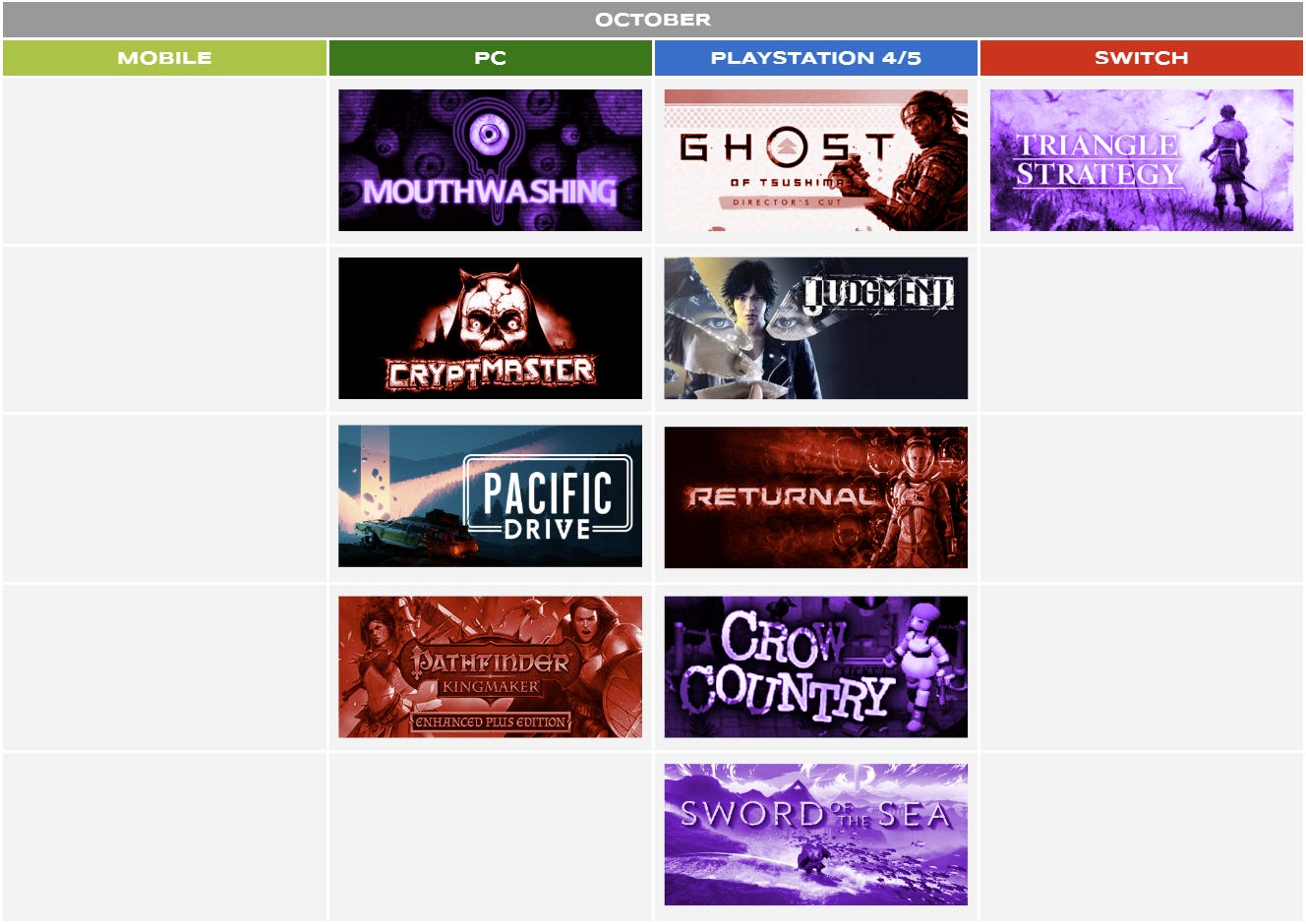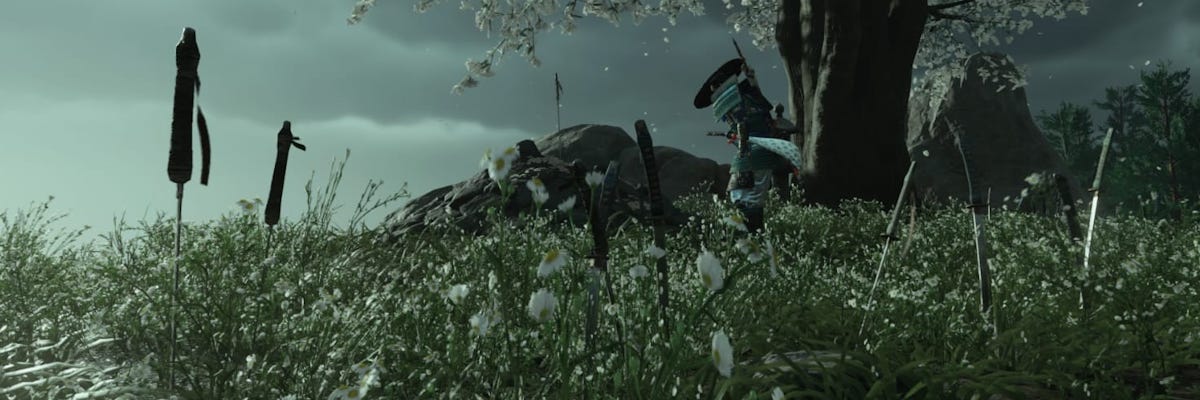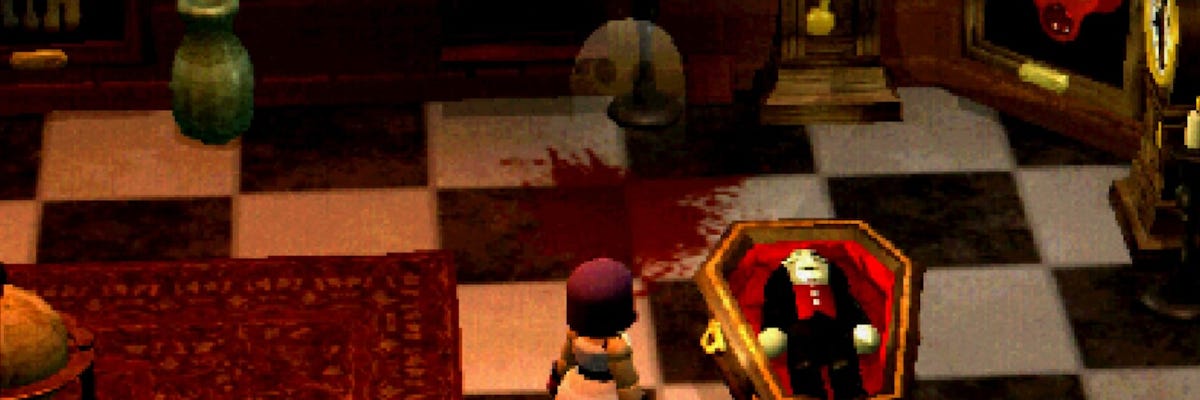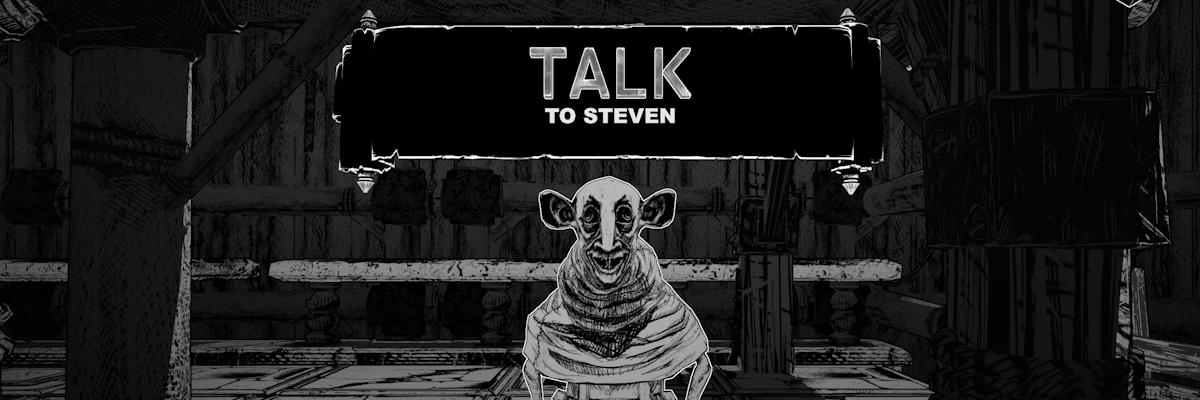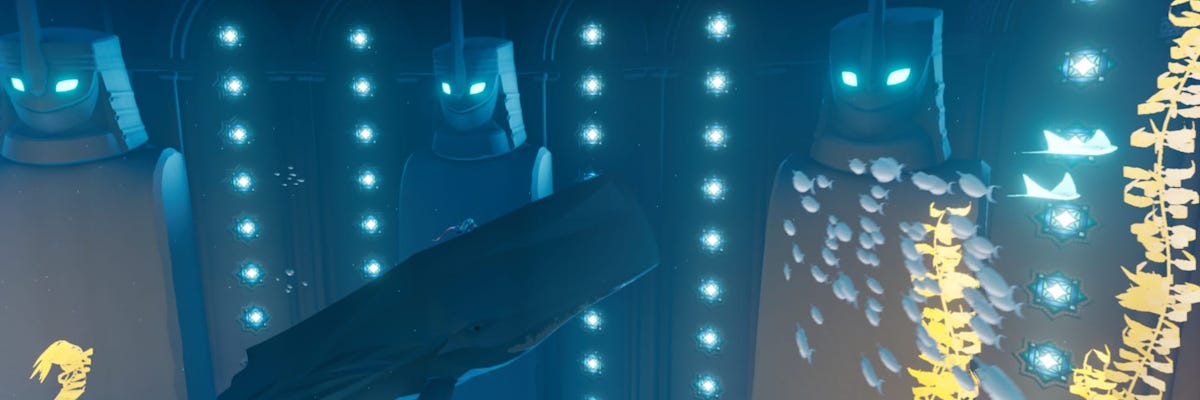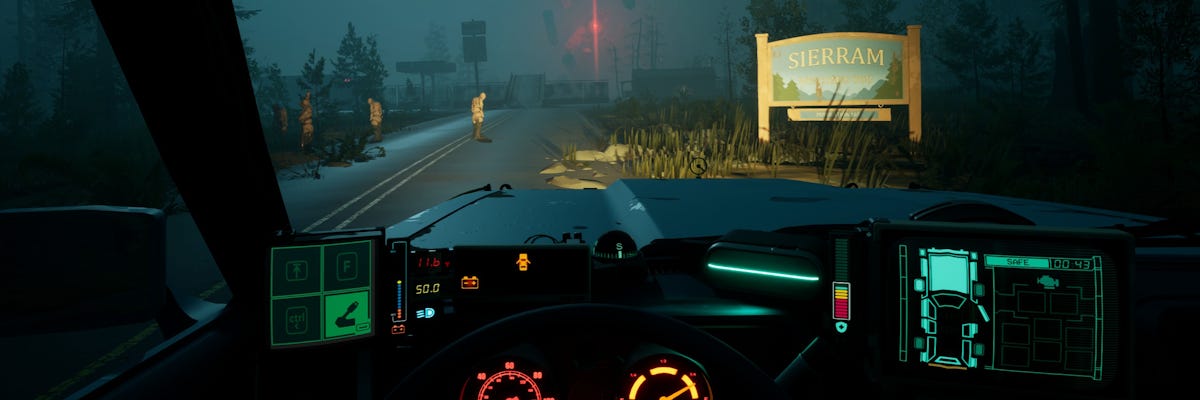2025 October
Spooky Games, others from the PS Catalog & first To-play Retirement
To-Play: 9 | Ongoing: 1 | Completed: 9 | Retired: 1 | Punted: 0
Est. Time to Beat: 14d 4h
The need to scratch that feudal Japan itch after bingeing on Shogun led me to exploring the PS+ catalog. Then I finally got around to a couple of the games I bought way back in February (Also can’t believe I was playing FNV back then, feels so long ago..) Plenty of titles to get through, entries might be more concise (or at least I’ll try..)
Judgment (2019)
Ongoing | 21h 00m
I didn’t get much time with Judgment but enough to experience this little gem:
The plan is still to finish the game though I probably need to drop it if I can’t wrap it by the end of the year.
Triangle Strategy (2022)
Completed | 54h 56m
With 3 nations forging alliances, breaking them and then allying with their previous enemies, Triangle Strategy as a name made more sense as the game went on. That doesn’t mean it’s not a silly name though.
I finished the game on the “red path” and mostly enjoyed my time with it.
What Worked for Me:
Grounded Politics: On top of all the twists and turns in the story, there will be a point where there are no good choices and players are challenged to pick between the 3 core tenets in the game: Morality, Liberty & Utility. There’s supposedly a good true ending but most won’t get it in the first playthrough. The epilogue that played for me heavily implied there is a better way (and have I mentioned I love epilogues?)
Characters, not classes: All characters have their own abilities progression—most are specialists while some are hybrids, able to do more but not as well. Mechanically I find not having the TRPG trope of min-maxing an OP build an interesting constraint. Every character ends up having a role and a battle is more about optimizing the composition of your lineup. I also find the character backstory vignettes that progressively unlock charming.
Kudos, is a currency earned by performing “optimal” actions during battle. I feel it’s just a great way to highlight the “right” way to play the game (because sometimes bigger numbers or “critical hit” isn’t enough). The Kudos vendor not only sells special actions called quietuses but also rare resources needed for upgrades.
Glad this isn’t just a cut scene ability.
What Didn’t Work for Me:
Voting: One of the main aspects of the game revolves around the core group of characters voting on key decisions. While the choices are interesting, I don’t know what the persuasion aspect adds to the game. If I already feel bad when the party went a different way from what I desire, I can only hope it is somehow less frustrating to direct the choices in NG+. I almost wish the game allows picking from a decision tree a la Nonary Games when replaying—the tree is already there after all!
Accessories, feels a little underplayed. It could be intended as a supplementary system, barely even taught in a tutorial. Their effects range from +1 to attributes to reviving when downed once per battle. I ignored the weaker accessories and did not buy the more expensive ones, preferring to use the gold for character upgrades

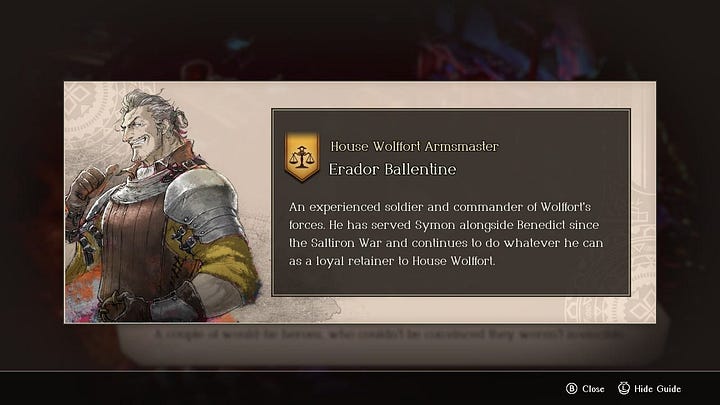

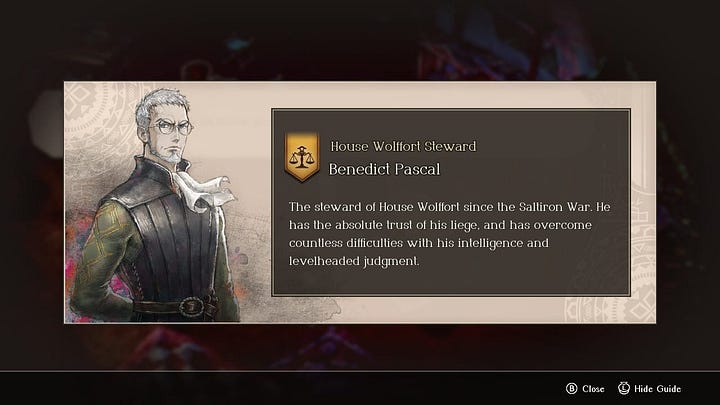
I read comments about how the story is boring and I can agree there is a lot of exposition, at least they are all voice-acted. At 50+h, multiple paths and an interesting combat system, I feel Triangle Strategy offers more compelling replay value—I dropped Three Houses quickly when I needed to redo the entire academy section for NG+.
Maybe I can attempt the other paths while minding the kids during TV time over weekends.
Pathfinder: Kingmaker (2018)
Retired | 68h 54m
I finally ran out of Steam to continue with Kingmaker. It came down to these reasons:
Unrefined UX: As the abilities/spells/effects got more complicated, I struggle to get all the information I need to enjoy the experience.
Uneven Pacing: It seems at least part of the main progression is gated by the unpopular kingdom management progression. Even after using gold to buy BP and having the kingdom management at a lower difficulty, it still feels like a slog. I believe where I left off, I was mainly waiting for resources to expand the territories.
Alternatives: I just have too many other CPRGs in the backlog—Pillars of Eternity 2: Deadfire, Wasteland 3 and even this game’s followup, Pathfinder: Wrath of the Righteous, among others. I played enough (plenty even) to believe Kingmaker won’t offer something that the other titles won’t.
It feels like a shame because I was very taken in by how faithful Owlcat seemed to have implemented the TTRPG ruleset. Hopefully they built on that in Wrath of the Righteous which I will get around to eventually…
Off-list
Ghost of Tsushima (2020)
Retired | 9h 51m
While it is typical of me picking up prequels when games release, it was wanting more samurai action after finishing more than half a season of Shogun in 2 days that led to me downloading Ghost of Tsushima from the PS+ catalog.
There was a lot, both the good & bad, of “old school” Assassin’s Creed games in Tsushima. After an initial honeymoon period, I was reminded why I generally avoid open world games.
What Clicked:
Presentation: The first thing that’ll stand out is how beautiful the world of Tsushima is. The minimalistic HUD stays out of the way, maximizing the enjoyment of colours & shadows, or the monochromatic Kurosawa mode should one fancy (I personally reserve just for photo mode) on display. Eventual updates also made sure the lip sync works for those who desire the more immersive Japanese voice acting.

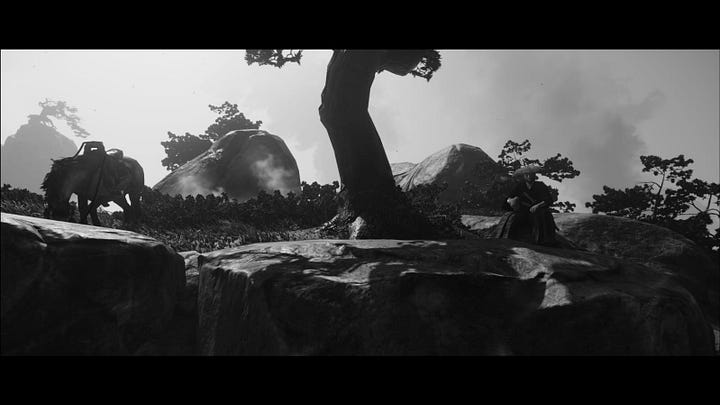
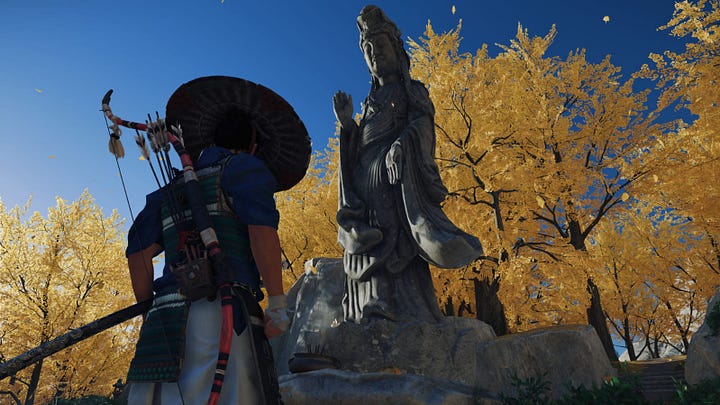

Samurai Gameplay: The combat is generally brutal and swift (but not without complaints, more on that later). It’s not as elaborate as what Nioh offers but the paired animation and brutality scratched the katana-wielding fantasy. I also appreciate the more organic loop of picking up rumours from NPCs to unlock locations.
Constraints: I was always the enjoyer of mission constraints in older AC games as a subtle way to both nudge players to use the various gameplay systems and abilities and rewarding them when they gain mastery. Tsushima has some of that. (The other old AC thing the game borrows is constraining the player to mission areas/setups. I am ambivalent to that but feels it simplifies setups with my dev hat on.)
Classic samurai face-off. Eventual upgrades allow you to take down more during the face-off.
What Led to Burnout:
3Cs: The parkour is not as refined as what I’d expected from a game that takes inspiration from Assassin’s Creed. There is no separation of “safe” and “unsafe” jumps that has led to both Jin and the horse having bad landings during my playthrough. I would also have preferred the camera to pull out and frame the combat setup. Manual camera control is needed on top of targeting if I don’t want to be attacked off camera.
Narrative Pace: As I read faster than the voice-acting plays out, I quickly realised the game doesn’t allow skipping during scripted scenes (in my defence, I don’t understand Japanese…) A less desirable inspiration from old ACs is the reliance on “walk & talks” for exposition.
Old School AC-ness: Ultimately it’s the repeated open world activities & collectables that dotted the map that broke me—there is only so many fox I can tolerate following. Instant failures due to breaking stealth, golden birds that simply fly into collision and map icons that cluster too close together for selection are things I expect Sucker Punch improve in the sequel.
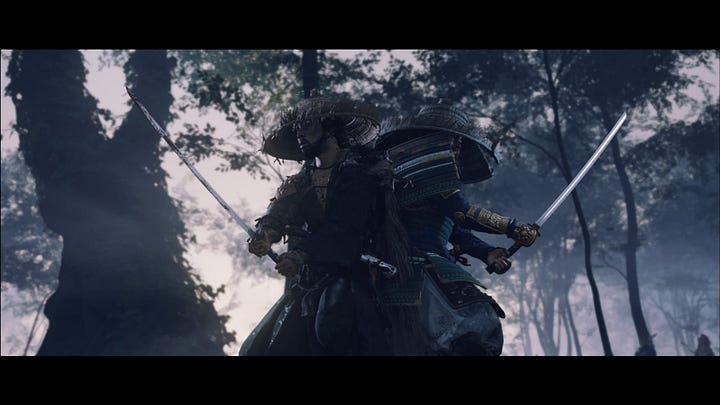
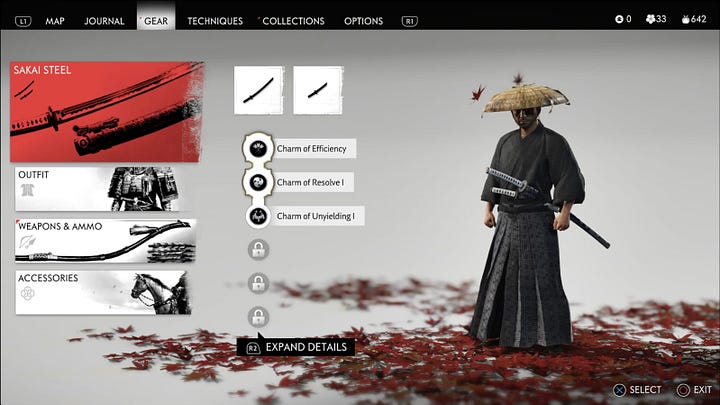
I am aware Jin has his fans but his initial stoic—“I must have honour”—personality didn’t exactly endear himself to me, compared to the supporting cast. The game is clearly successful but the revenge plot and Ubisoft-style open world (I generally prefer the Bethesda style) wasn’t sufficient to fill the Shogun-shaped hole in my heart.
Returnal (2021)
Retired | 14h 9m
I don’t have much of a history with Housemarque’s games (I might have played a bit of Nex Machina) but Returnal has been in my backlog since its praises were making the rounds since release. Naturally, it kicked off my spooky season of games.
Some tips I found:
Turn on Always Run & Max Settings for Aim Assist
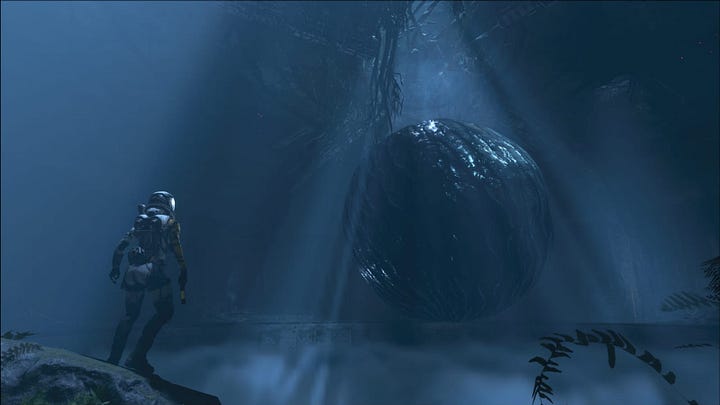
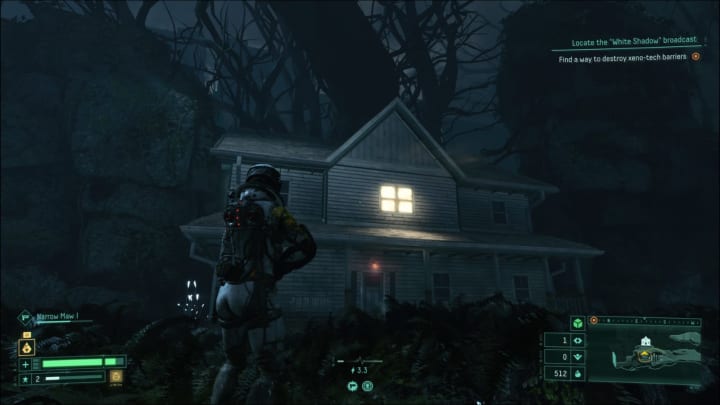
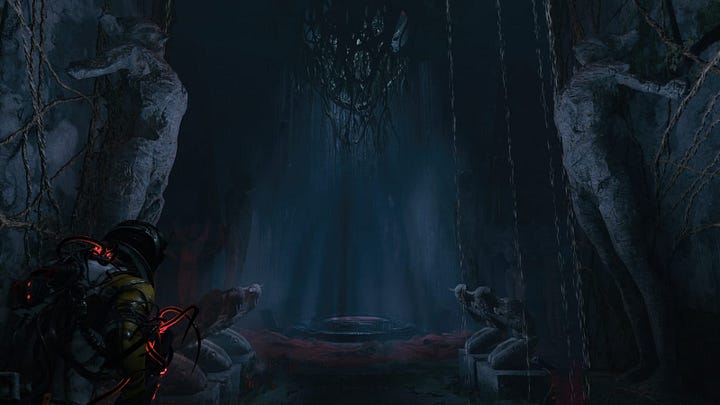
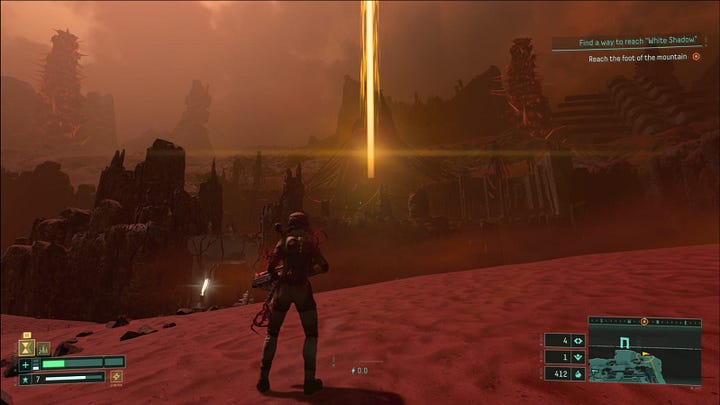
What Worked for Me:
Vibes: Housemarque trades in the neon of their earlier games for a spooky atmosphere in Returnal. The first zone especially was giving me H. R. Giger, foreboding alien world. The entire presentation is brought together with excellent Dualsense controller integration. Exploring the house felt like a horror game.
Game Flow: Returnal at its core is a rogue-like—no meta progression to make you stronger each run with the only unlockables being abilities that gates areas (though I doubt most will call it a Metroidvania). After applying some settings, the moment to moment shooting felt great; the hunt for weapons and upgrades is compelling; and the risk-reward of the corruption & parasite systems will bring out the gamblers in us.
Map: Personally, the map makes or breaks a dungeon crawler, especially if it’s procedurally generated (like Returnal) or using lofi/repeated kits (see Cryptmaster below). The map here is greatly functional, from using colours and shapes to denote room types to not being overcluttered even when indicating pickups.
What Didn’t Work for Me:
A Game of two Games: Returnal reminded me of a feeling I had for older Souls-likes, where the boss fights and the exploration leading up to them felt like 2 distinct games, that requires different skillsets. Not only are there no respawn points before boss fights a la Elden Ring to allow players to quickly jump back and learn the boss patterns, death in Returnal, being a rogue-like, meant restarting from square one. This became worse when I had to go through the first zone in order to be powerful enough to attempt zone 2 if I die to the zone 2 boss. It’s great that Housemarque eventually patched in support for suspending a run.
This reminded me of some of the bullet hell bosses in Nier: Automata.
Technical Issues: I don’t know if it’s related to the aforementioned run suspension system but Returnal is the buggiest PlayStation first party game I played with multiple hard crashes and random freezing, that needed me to hard reset the console. Thankfully, I was able to resume from some autosave. This begs the question of why can’t the game just allow regular saves if it was already doing so in the background. Even if players want to save scum, couldn’t it load up the latest autosave or reseed the RNG?
Trigger Gimmick: One of the lauded features of Returnal was the usage of the L2, where pulling halfway will “focus aim” and pulling full activating the weapon’s alt-fire. While novel initially, holding a trigger halfway wasn’t the most comfortable action for me. To be fair, I wasn’t the biggest fan of games with extended usage of the adaptive triggers (I disabled it completely for Miles Morales IIRC).
It took me almost 10 hours to taken down the boss of the first zone and another 4 to reach the second boss. I’ll admit there’s some skills issue but ultimately, I don’t feel the game respects my time. It is a great time sink with satisfying game feel but I suspect the game would be a quarter of the length if it wasn’t a hardcore rogue-like.
Lady probably shouldn’t enter every hole she finds in an alien planet.
Despite it’s technical issues I faced, it’s still impressive this game that delivers a creepy atmosphere came from a studio which was previously best known for neon-coloured arcade bullet hells.
Mouthwashing (2024)
Completed | 2h 21m
Mouthwashing is part of the collection of games I got back in February and definitely a spooky season game.
While it’s easy to spoil most 2+h games, the best parts of Mouthwashing needs to be experienced and is beyond my ability to describe with words. Still with the story being the main point of the story, I’ll endevour to keep my thoughts spoiler-free so any reader can experience the game blind like I did.
What Hit Me:
Story: Using relatively simple narrative techniques, Mouthwashing delivered a surprising and surrealistic story. Employing a non judgmental “show, don’t tell”, it allows each player to have their own takeaway. From the online discussions, I’m not the only one left thinking post rolling credits.
Trippy Presentation: I’ve been on a psychedelic trip but now I imagine it must be like some of what I experience in Mouthwashing. It usage of glitchy audio and visual effects fits well with the retro aesthetics. One memorable one was used to obfuscate a certain element in the environment, it left me wondering how it’s even achieved technically.
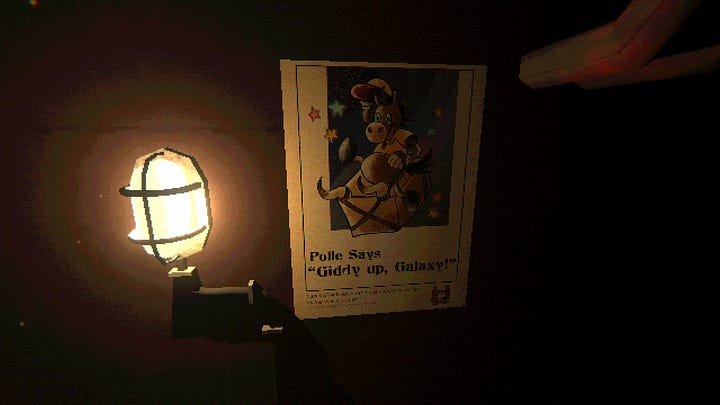

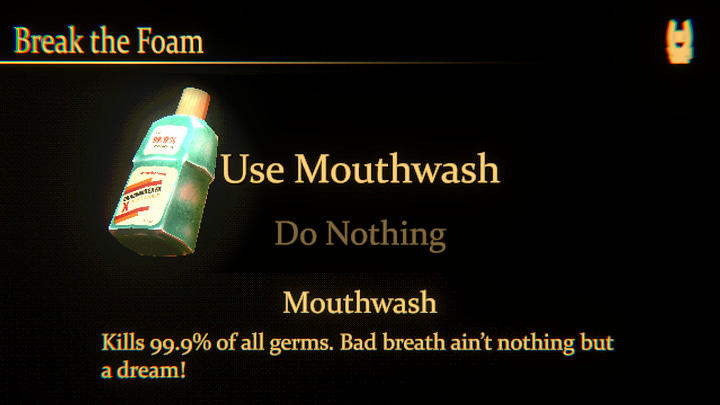
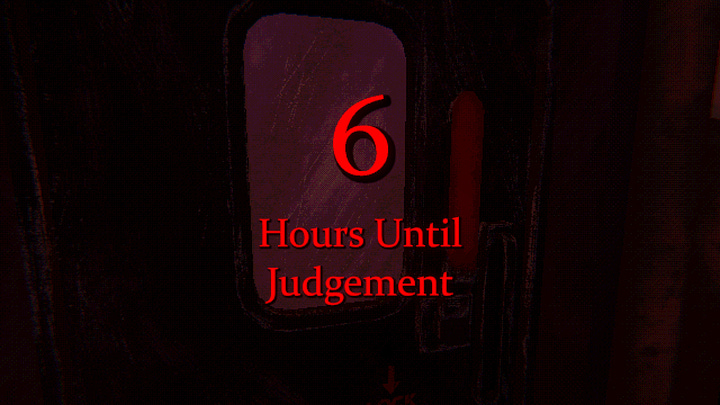
Some Quibbles:
Lack of Photosensitive accessibility: As someone who can be sensitive to strobing/blinking lights, I believe with those elements should at least give a warning even if a photosensitivity mode can’t be implemented.
Unclear Gameplay: In the couple of rare gameplay segments, the rules aren’t super clear. I had to go by trial and error and found similar confusion when I looked it up online afterwards. It definitely adds to the frustration or intrigue, depending on which way you’re looking from.
Mouthwashing is not for everyone, some call it a “walking simulator”, others complain that it’s too short. If you, like me, don’t mind paying a movie ticket equivalent for a unique experience, do give it a shot.
Crow Country (2024)
Completed | 7h 8m
I continue my spooky game journey with Crow Country. Available on PS+ catalog, it’s been on my radar since hearing good things about it. The sub-10 hour retro-inspired survivor horror game turned out to be a pretty fun time.
Looking it up post-game, I was surprised to find out that it comes from the same developers that brought us Snipperclips.
Here’s a Spoiler-tagged Steam Guide.
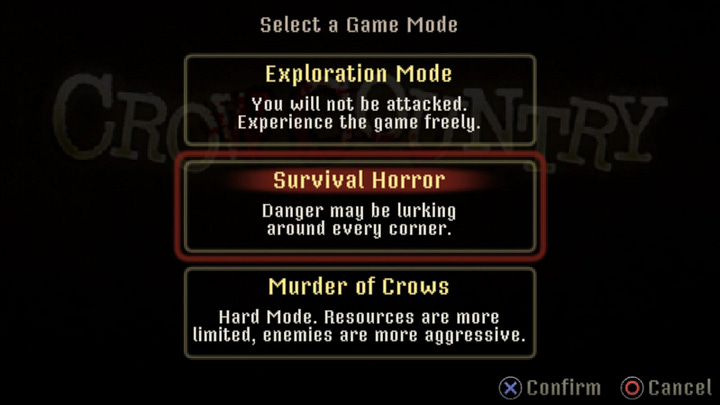
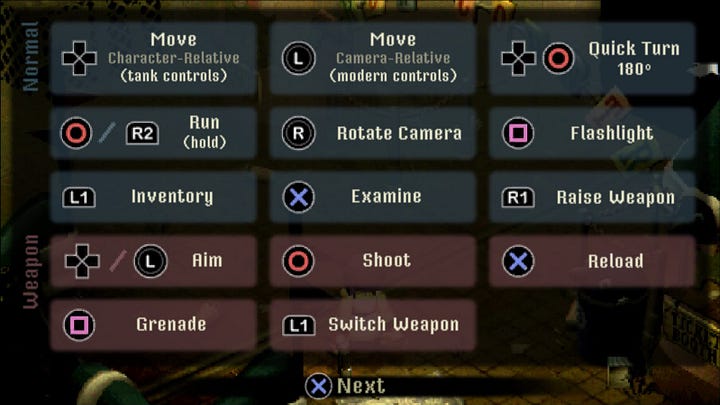
What Worked for Me:
Retro Visuals: I feel 2D pixel art age better than early 3D games. Through what I’m guessing are a combination of lessons learnt and modern techniques Crow Country successfully presents a style that evokes the nostalgia of early PS1 games without being janky. Its use of low fidelity graphics combined with unsettling animations & sounds reminds me of Lone Survivor, where the players fill in the rest of the horror details in their minds.
I don’t think any game can get away with tank controls style aiming unless they look like an old PS1 game…
Managing Tension: While the world is mini sandbox, the core experience is actually a linear sequence of locks & keys with light puzzles—so much so there is an in-game list of the objectives, almost as if its intended for speed running. In order to maintain the sense of foreboding, a few systems come into play:
As objectives complete, the world becomes gloomier to simulate the passage of time. On top of that, new enemies & hazards are also spawned, adding to any left of those behind by the player.
Containers don’t always drop items when destroyed, only when the player needs them. Vending machines around the park also drop free consumables but only when the player is low on them.
What Didn’t Work for Me:
Environmental Traps: One cool aspect of Crow Country is that environmental traps affect both enemies and player. Unfortunately, I find that enemies don’t seem to reliably trigger them but always gets me… The chandelier which requires aiming up and shooting at it was also terrible to trigger with the aiming system.
Transition Camera: Having the camera point at the player character when performing area transitions is a totally valid decision. I just find myself wishing the camera points away so I can see more of the surroundings so that I don’t stumble blindly into enemies & hazards, especially with the number of them late-game—though that will then leave the player character obfuscated and players unable to situate themselves (Game dev is hard, I guess…)
While the game starts with a mystery, I find the story relatively easy to follow as it unfolds rather economically through dialogues and some written exposition. A retelling of familiar survivor horror tropes, I feel it still earns its twists & ending.

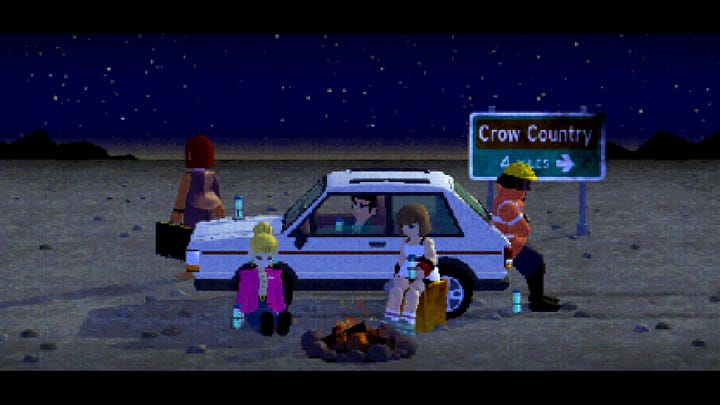
I’ll recommend Crow Country to fans of the survivor horror games of old, or people who don’t have the time or are too scared to play a longer spooky game. I’m now curious about SIGNALIS, a survivor horror with lofi visuals in a similar vein (Ah, somehow I have it in my Humble account)
Cryptmaster (2024)
Retired | 5h 12m
I tried Cryptmaster’s Steam NextFest demo enough that I got it back in February. It’s essentially a dungeon crawler crossed with a typing game.
The two main type of encounters while exploring are a variety of word riddles and fighting enemies by typing out abilities that characters obtained. Along the way, you also type to pick up bugs and fishes—these seem to be part ability resource gathering, part ingredient gathering.
What Worked for Me:
Unique Premise: While there were word/typing games in the past—Typing of the Dead series comes to mind—Cryptmaster leans heavily into the whole word aspect. Characters progress (and sometimes unlock abilities) by figuring out words under them and letters are used as
resources for abilities, where stronger abilities tend to have longer names
reward from loot & defeating enemies, unveiling the corresponding letters in the above-mentioned progression words
representing character health, leveling up appends additional letters to the characters’ names
Robust Response: For a game that claims to not utilize any generative AI but “a lot of voice work and tricks to simulate responses”, the quality of the response is probably the most celebrated aspect of the game. 3 examples that stood out:
a rap battle where player is challenged to come up with rhyming words
accepting alternative answers with a voiced response
pronouncing the free-form names when characters level up (though the titular Cryptmaster will state he’ll continue to refer to them by their “original names”).
What Didn’t Work for Me:
Presentation Disconnect?: The main reason why I fell off Cryptmaster was that the dungeon crawling just fail to click with me; a huge part of why I didn’t enjoy the dungeon exploring is me struggling to situate myself either with the map or with the low fidelity monochromatic environmental art. While the visual novel style stands out from the Steam crowd, the dark and sometimes grotesque creatures (I mean just look at Steve in the banner) clashes with both the humour and fantasy soundtrack. (The clash could be intended and maybe explained eventually or I could just have bad taste.)

Dialogue Speed: A lot of effort is clearly put into the dialogue’s writing and delivery but I ended up skipping a bunch of it because the Cryptmaster talks so often and so slowly. At least one other person agrees. It’s a shame since a lot of the dry wit is in the voice-acting.
Lack of Log: One flavour of riddles in the game involves guessing items in containers using clues provided by the Cryptmaster, by asking for touch, smell, use, visual, etc. Since there are more than a handful chances to guess and/or ask for clue, I wish there is log of sorts listing down the clues given to better help guess the item. In a similar vein, I would love to be able to pin some character abilities on the HUD for reference.
Config Tip:
The game runs with uncapped frame rates. To prevent the GPU overutilization, you can cap the frame rates either through your GPU utility or something like RivaTuner.
I ended up retiring the game when I reached chapter 3. With a total of 5 chapters, that’s just before the midway point by my estimate. I think you really need to be into word/typing games, which I thought I was initially. It’s still unique enough an experience that I’ll recommend everyone to at least give the demo a go.
Perhaps to reach a wider audience, there are difficulty/accessibility options to:
pick more letters as rewards when defeating enemies
change combat to turn-based instead of real-time
pressing ‘Enter’ instead of needing to type out interaction phrases
Not an option but players can also just let the Cryptmaster solve the “skull” word riddles”.
I did end up enabling turn-based combat (in my defense, I needed to bring up the abilities list since I can’t remember them) as well as ‘Enter’ to interact. They removed some friction but ultimately removed some uniqueness from the game as well.
Oh, and there is also surprise card minigame.
Sword of the Sea (2025)
Completed | 5h 2m
Sword of the Sea is one of the rare day one release on the PS+ catalog—it functions more like a subscription for back catalog, compared to its competitor Xbox Game Pass. It continue the nautical theme from developer Giant Squid’s previous game, Abzû, and combine it with the desert environment reminiscent of Journey, which the game’s director previously worked on.
There were a few days when I was home with the youngest kid and we had a blast in the game: surfing/skating around, turning desert into sea and riding marine creatures.
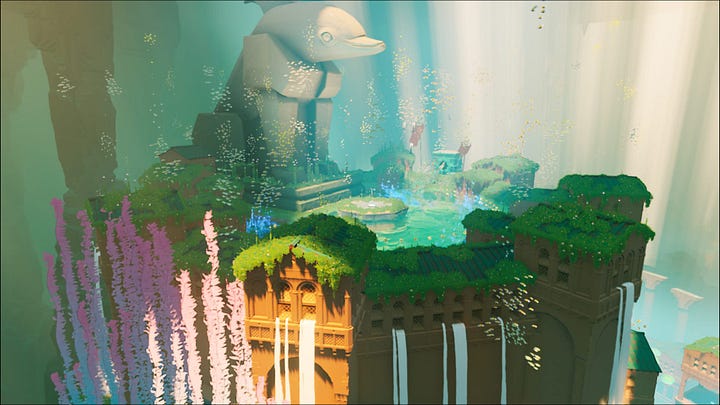
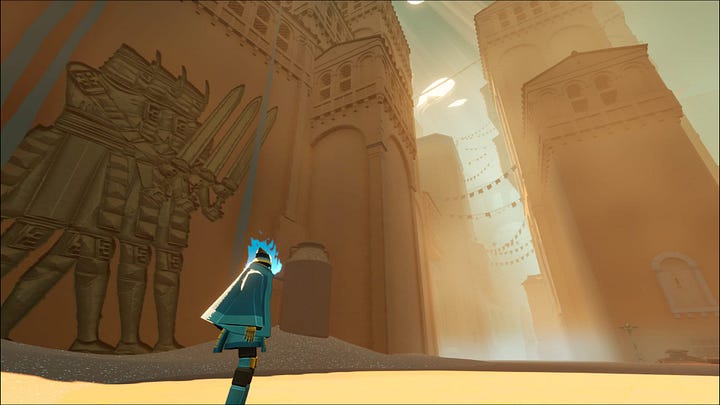
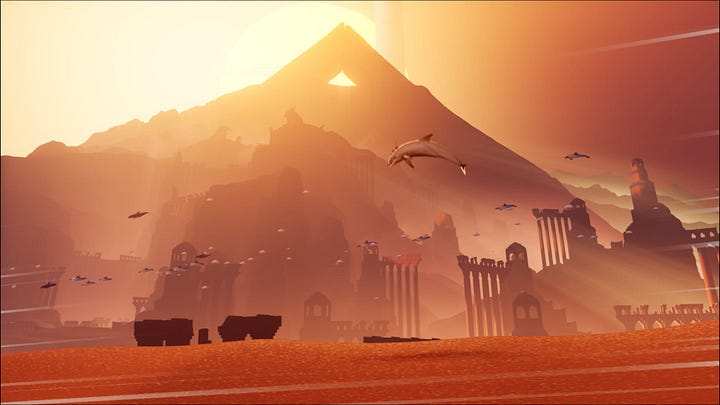

What was Cool:
Sword of the Sea is an audio-visual spectacle from start to end.
The controls are intuitive enough that a child is able to have a good time. The camera’s auto-follow is tuned to not to have to worry about manual controls too much.
It is always awe-inspiring to see the desert transform into the ocean and witness the marine creatures come to life.
It’s mainly environmental puzzles and light platforming to get to a collectable or interaction point. If all else fails, follow the fishes.
Despite having skate tricks and combos, they’re a wholly optional component. The player decides how much skating tricks they want to engage in.
The game culminates in a boss fight that is an exotic gameplay sequence but doesn’t overstay its welcome.
NG+ unlocks when the game is beaten for the first time, unlocking a trick multiplier tracker, a speedometer and an ability to earn speed boosts.
Pacific Drive (2024)
Ongoing | 4h 48m
Another of the games bought in February after enjoy it’s Steam Nextfest demo. I enjoyed the tactile feel of driving the janky station wagon and organizing the various inventories. The latest release includes a bunch of settings to cater to gamers with varying appetite for the different game loops.
I spent a bunch of time finetuning the performance with complaints common online. I want to spend more time and will be back with more impressions.
Congratulations if you managed to get to this point. (It’s ok if you skimmed or even skipped through sections, I won’t judge.) I should also really take my own advice and starting writing early and not leave it till the end…
Postscript
A little confession: amidst the whole FM26 beta debacle, I sank hours into a new FM24 save that’s setup with a custom database. This time round, I’m taking control of RB Omiya Ardija, a relative new member of the Red Bull footballing group. Since the name and logo hasn’t been updated in-game, I get their former “squirrel” logo (and nickname?).

The full game isn’t reviewing too well at the moment. On top of that, I skip every other FM so I’m probably going to spend more time with House Squirrel.

